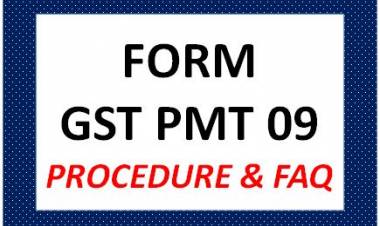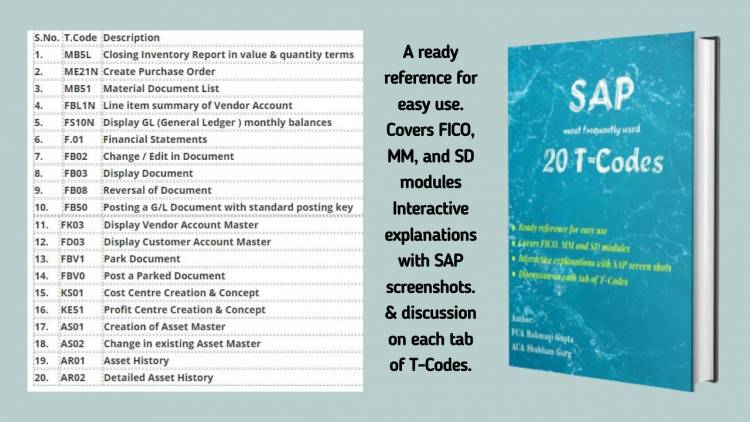Business Reorganisation - Tax Impact
Business Reorganisation
Merger: Merger is a combination of two or more companies in to one company. Merger is of two types:
- Absorption: one company loses its identity and assets and liabilities of this company are taken over by the other company.
- Amalgamation: all the participating companies go out of existence to form a new company.
In merger, the consideration is paid and received in the form of shares and receive money in the form of dividend in future.
The company which gets merged is called amalgamating company and the company which is formed as a result of amalgamation is called amalgamated company.
Acquisition / takeover: Acquisition involves the transfer of controlling interest in a company from one management to another.
In acquisition, the consideration is in form of money. The management intending to takeover control pays money for no. of shares that transfers control.
Demerger: Demerger is split or division of the company.
Slump Sale: Slump sale is sale of undertaking as a whole including all the assets and liabilities as a going concern.
Merger

Meaning of amalgamation (Section 2(1B):
Amalgamation in relation to companies means the merger of one or more companies with another company or merger of two or more companies to form one company, in such manner that-
- All the property of amalgamating companies immediately before the amalgamation becomes the property of amalgamated company
- All the liabilities of amalgamating companies immediately before the amalgamation becomes the liabilities of amalgamated company
- Shareholders holding not less than 75% in value (other than shares held therein immediately before the amalgamation) becomes shareholders of the amalgamated company. But exclude
- Transfer of shares by virtue of sale purchase transaction
- Transfer of property by way of distribution by liquidator
Carry forward and set off of accumulated losses: (Section 72A):
The amalgamated company is entitled to carry forward the unabsorbed depreciation and accumulated losses of amalgamating company provided the following conditions are fulfilled:
- There should be amalgamation of: -
- a company owning an industrial undertaking or ship or hotel with another company, or
- a banking company with a specified bank
- one or more public sector company or companies engaged in the operations of aircraft with one or more public sector companies engaged in the similar business.
- Conditions to be fulfilled:-
- Conditions to be satisfied by amalgamating company:
- Engaged in same business, for 3 or more years
- More than 75% of the book value of the fixed assets, held by it 2 years prior to the date of amalgamation has held continuously of amalgamation.
- Conditions to be satisfied by amalgamated company:
- At least 75% of the book value of fixed assets of the amalgamating company are hold continuously by amalgamating company for a period of 5 years from the date of amalgamation
- For a period of 5 years from the date of amalgamation, the amalgamated company continues the business of amalgamating company
- The amalgamated company fulfills such other conditions as may be prescribed (rule 9C). Following conditions are prescribed:-
- The amalgamated company, shall achieve the level of production of at least 50% of installed capacity of the amalgamating undertaking before the end of 4 years from the date of amalgamation and continue the to maintain till the end of 5 years.
- The amalgamated company shall furnish to the assessing officer a certificate in form 62, duly verified by an accountant.
- In case the conditions mentioned at clause 2 above are not satisfied, the set off of loss or allowance of depreciation made in any previous year in the hands of amalgamated company shall be deemed to be the income of amalgamated company chargeable to tax for the year in which such conditions are not complied with. Further the balance accumulated loss and unabsorbed depreciation not yet set off shall not be allowed to be carried forward and set off.
If above conditions are satisfied then accumulated losses will be allowed to be carried forward by the amalgamated company for fresh 8 years and unabsorbed depreciation can be carried forward indefinitely.
Tax concessions / incentives in case of amalgamation:
- To amalgamating company
- Transfer of capital assets will not be regarded as transfer for the purpose of capital gain, if the amalgamated company is an Indian company. (section 47(vi))
- Transfer of shares in Indian company by foreign company to another foreign company will not be regarded as transfer for the purpose of capital gain under section 45 of Income tax Act, if following conditions are satisfied:
- Atleast 25% of the shareholders of the amalgamated foreign company should continue to remain shareholders of amalgamated foreign company, and
- Such transfer does not attract tax on capital gain in the country in which amalgamating company is incorporated
- Transfer of capital assets by one banking company to other banking institution in the scheme of amalgamation, shall not be regarded as transfer for the purpose of capital gain.
- Transfer of shares (which derives its value from the shares of an Indian company, directly or indirectly) by foreign company to another foreign company will not be regarded as transfer for the purpose of capital gain under section 45 of Income tax Act, if following conditions are satisfied:
- Atleast 25% of the shareholders of the amalgamated foreign company should continue to remain shareholders of amalgamated foreign company, and
- Such transfer does not attract tax on capital gain in the country in which amalgamating company is incorporated
- To shareholders of the amalgamating company
As per section 47(vii), transfer of shares by shareholder of an amalgamating company shall not be regarded as transfer for capital gain purpose, if following conditions satisfied:
- Transfer of shares is made in consideration of shares of amalgamated company
- Amalgamated company is an Indian company
And cost of acquisition of such shares in amalgamated company shall be cost of cost of acquisition in the amalgamating company and also the period for which the shares were held in amalgamated company shall also be included.
- To amalgamated company
The amalgamated company shall be eligible for tax concessions only if following two conditions are satisfied:
- The amalgamation scheme satisfy all the conditions laid down in section 2(1B)
- The amalgamated company is an Indian company
Cost of Acquisition of assets of amalgamating company in the books of amalgamated company:-
- Non Depreciable assets:
Cost of acquisition to the previous owner as increased by cost of improvement incurred by him. However, if the non-depreciable asset is acquired before 01/04/2001 then cost of acquisition to amalgamated company can be taken as cost of acquisition to previous owner or fair market value of the asset as on 01/04/2001, at the option of the amalgamated company.
Period for which asset was held by previous owner shall also be considered in determining the short term / long term nature. But indexation shall be allowed from the year of amalgamation.
- Depreciable assets:
for calculating depreciation: WDV of the block of assets as in the case of amalgamating company as reduced by depreciation actually allowed in preceding previous year
for calculating capital gain: period of holding and indexation are irrelevant in this case as these assets will be included in the block of assets of amalgamated company. If any asset of the block or entire block is transferred then capital gain on such transfer will be treated as short term capital gain.
Other important points:
- Effective date of amalgamation shall be date mentioned in scheme.
- Amalgamated company shall be liable to pay tax if cannot be recovered from amalgamating company:
- For the previous year in which amalgamation took place – up to the date of amalgamation
- For the previous year immediately preceding year in which amalgamation took place
- Depreciation shall be apportioned in between amalgamating company and amalgamated company in the ratio of no. of days for which asset was used by them.
- Expenditures incurred by Indian company (on or after 01/04/1999) wholly and exclusively for amalgamation, the same shall be allowed as deduction to extent of one-fifth, for each of five successive previous years from the year of amalgamation.
- Unabsorbed capital expenditure on scientific research of the amalgamating company will be allowed to be carried forward and set off in the hands of amalgamated company and in case such assets is sold by amalgamated company, then the sale price to the extent of cost of the asset shall be treated as business income and sale price above cost shall be treated as capital gain in the hands of amalgamated company.
Demerger

Section 2(19AA) – demerger in relation to companies, means the transfer by demerged company of its one or more undertakings to any resulting company (pursuant to scheme of amalgamation u/s 391 to 394 of Companies Act), in such a manner that:-
- All the property of undertaking being transferred by the demerged company immediately before the demerger becomes the property of resulting company
- All the liabilities of undertaking being transferred by the demerged company immediately before the demerger becomes the liabilities of resulting company
- Above properties and the liabilities are transferred at values appearing in books of accounts immediately before demerger.
- In consideration of the demerger, the resulting company shall issue its shares to the shareholders of the demerged company on a proportionate basis.
- Shareholders holding not less than 75% in value (other than shares held therein immediately before the amalgamation) becomes shareholders of the amalgamated company. But exclude transfer of assets by virtue of acquisition.
- The transfer of the undertaking is on a going concern basis.
- The demerger is in accordance with the conditions, if any, notified under section 72A(5) by central Govt.
Note:
In case of general or multipurpose liabilities the following formula is used:
Amount of general / multipurpose Value of assets transferred in demerger
borrowings If any of the demerged company X ---------------------------------------------------------
Total value of assets of demerged company
Immediately before demerger
Tax concessions / incentives in case of demerger:
- To demerged company
- Transfer of capital assets will not be regarded as transfer for the purpose of capital gain, if the resulting company is an Indian company. (section 47(vib))
- Transfer of shares in Indian company by foreign company to another foreign company will not be regarded as transfer for the purpose of capital gain under section 45 of Income tax Act, if following conditions are satisfied:
- Atleast 75% of the shareholders of the demerged foreign company should continue to remain shareholders of resulting foreign company, and
- Such transfer does not attract tax on capital gain in the country in which amalgamating company is incorporated
- Transfer of shares (which derives its value from the shares of an Indian company, directly or indirectly) by foreign company to another foreign company will not be regarded as transfer for the purpose of capital gain under section 45 of Income tax Act, if following conditions are satisfied:
- Atleast 75% of the shareholders of the amalgamated foreign company should continue to remain shareholders of amalgamated foreign company, and
- Such transfer does not attract tax on capital gain in the country in which amalgamating company is incorporated
- To shareholders of the Demerged company
As per section 47(viid), transfer of shares by shareholder of an demerged company shall not be regarded as transfer for capital gain purpose, if transfer of shares is made in consideration of shares of resulting company.
cost of acquisition of such shares in Resulting company=
Cost of acquisition of the shares net book of assets transferred in demerger
In resulting company X ---------------------------------------------------------
Net worth of demerged company
Immediately before demerger
cost of acquisition of such shares in Demerged company =
Cost of acquisition of original shares in demerged company – above value of shares derived for resulting company
- To resulting company
The resulting company shall be eligible for tax concessions only if following two conditions are satisfied:
- The demerger satisfy all the conditions laid down in section 2(19AA), and
- The resulting company is an Indian company
Slump sale

Section 2(42C): Slump sale means the transfer of one or more undertakings as result of sale for a lump sum consideration without values being assigned to the individual assets and liabilities in such sales.
Computation of capital gain in slump sale:
Any profit or gain arising on slump sale effected in previous year shall be chargeable as long term capital gain of that previous year.
However if any capital asset being one or more undertakings owned and held by assesse for not more than 36 months immediately preceding the date of its transfer shall be treated as short term capital gain.
Cost of acquisition: Net worth of the undertaking or the division. And no indexation is to be done.
Net worth =
total assets of undertaking (wdv for depreciable and book value for others) – total liabilities of undertaking
(change in value due to revaluation of assets is to be ignored)
Conversion of partnership firm in to company
Section 47(xiii): In case of conversion of partnership firm in to company, transfer of capital assets do not attract tax if following conditions are satisfied:
- All the assets and liabilities of the firm becomes the assets and liabilities of the company
- All the partners of the firm become the shareholders of company, in the proportion of their capital
- Partners of the firm do not receive any consideration other than by way of shares in company
- Aggregate shareholding of the partners in company is not less than 50% of the total voting power in company and shall continue to be such for a period of 5 years from the date of succession.
In case above conditions are complied with then accumulated loss and unabsorbed depreciation of the predecessor firm or the proprietary concern shall be deemed to be the loss or allowance for depreciation of the successor company. (Section 72A(6))
However in case of default in compliance of above conditions the above loss or allowance shall be deemed to be the income of successor company for the year in which such non compliance occurred.
As per section 47A(3) if any of the above conditions are not satisfied / fulfilled the capital gain not charged earlier shall be chargeable to tax in the hands of successor company in the previous year in which such conditions are not complied with.
Conversion of sole proprietorship firm in to company
Section 47(xiv): In case of conversion of sole proprietorship firm in to company, transfer of capital assets do not attract tax if following conditions are satisfied:
- All the assets and liabilities of the proprietorship firm becomes the assets and liabilities of the company
- Proprietor do not receive any consideration other than by way of shares in company
- Aggregate shareholding of the proprietor in company is not less than 50% of the total voting power in company and shall continue to be such for a period of 5 years from the date of succession.
In case above conditions are complied with then accumulated loss and unabsorbed depreciation of the predecessor firm or the proprietary concern shall be deemed to be the loss or allowance for depreciation of the successor company. (Section 72A(6))
However in case of default in compliance of above conditions the above loss or allowance shall be deemed to be the income of Successor Company for the year in which such non-compliance occurred.
As per section 47A(3) if any of the above conditions are not satisfied / fulfilled the capital gain not charged earlier shall be chargeable to tax in the hands of successor company in the previous year in which such conditions are not complied with.
Conversion of Private limited company or unlisted company in limited liability (LLP)
Section 47(xiiib): In case of conversion of private limited company or unlisted company in to LLP, transfer of capital assets / intangible asset or transfer of shares in company do not attract tax if following conditions are satisfied:
- All the assets and liabilities of the company immediately before the conversion become the assets and liabilities of the LLP.
- All the shareholders of the company become the partners of the LLP and their profit sharing ration shall remain in the same proportion of their shareholding in company on the date of conversion.
- The shareholders of the company do not receive any consideration in any form other than by way of share in profit and capital contribution in the LLP
- During the period of 5 years from the date of conversion, the aggregate of profit sharing ration of the shareholders of the company in the LLP shall not be less than 50%
- The total sale, turnover or gross receipt in business of company in any of the three previous years preceding the previous year in which conversion takes place does not exceed Rs. 60 lakh.
- The total value of assets as appearing in the books of accounts of company in any of the three previous years preceding the previous year in which conversion takes place does not exceed Rs. 5 crore, and
- No amount is paid, either directly or indirectly, to any partner out of balance of accumulated profit standing in the accounts of the company on the date of conversion for a period of three years from the date of conversion.
If above conditions are not complied in any subsequent year, then amount of profit or gain from capital assets /shares shall be deemed to be profit and gains of successor LLP / shareholders of predecessor company for the previous year in which the above conditions are not complied with.
Mat credit of Predecessor Company will lapse.
 Download APP
Download APP






































